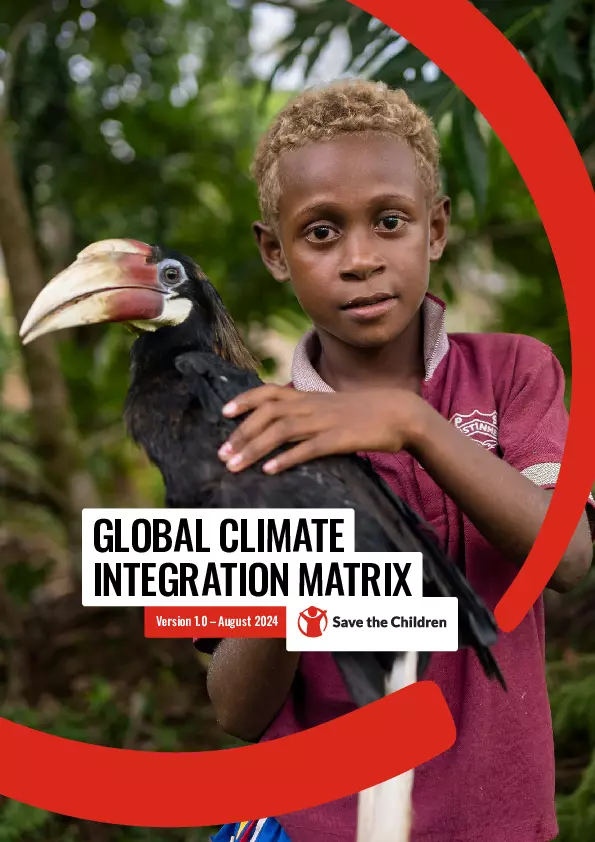
Manuals, Toolkits and Guidance
Programming in a Context of Increasing Climate-related Risk and Change: A climate risk-informed guide for all sectors
Publication year:
2024
English
Format:
(2.2 MiB)
Publisher:
Save the Children International
Children bear the brunt of climate change despite contributing least to it. Around 183 million children across the world face the triple threat of high climate risks, multidimensional poverty and conflict, putting their survival, education and protection at risk. The impacts of the climate crisis are accelerating rapidly, compounding inequalities and affecting children, particularly girls, first and worst: more than 99%of deaths attributable to climate change occur in developing countries; over 80%are children. Across regions, school enrolment has declined 20–30%due to prolonged droughts. By 2050, over 200 million people across regions will migrate due to climate change. Climate change is relevant to everything and in all contexts of Save the Children’s work. We need to ensure that our work for and with children is sustainable and adapted to increasing climate-related risk and change.
This guide is a tool designed to assist Save the Children staff to identify and address climate-related risks to humanitarian and development projects. Managing climate-related risks in projects is critical to avoid loss, damage and harm to children and their communities, the environment and project investments, and to ensure that project outcomes are sustainable. Our legitimacy with communities, partners and donors depends on our ability to manage climate-related risks. Using this guide will support staff in designing proposals and projects with:
Outcomes that realize humanitarian objectives and development progress, in contexts of climate-related risks to children’s lives and rights
Outputs:
- That are informed by and reduce the impacts of climate change, and
- That will be more robust and less likely to be negatively impacted by climate-related hazards, which could lead to harm.
Activities that are planned to minimize disruption and associated costs.
Read full abstract
Authors
View & Download
Document information
Publisher
Content type
Rights
© Author/Publisher
Found a mistake? Help us improve!
If you have noticed a document assigned to the wrong author or any other inaccuracies, let us know! Your feedback helps us keep our data accurate and useful for everyone.
Related Documents
Share
Link

